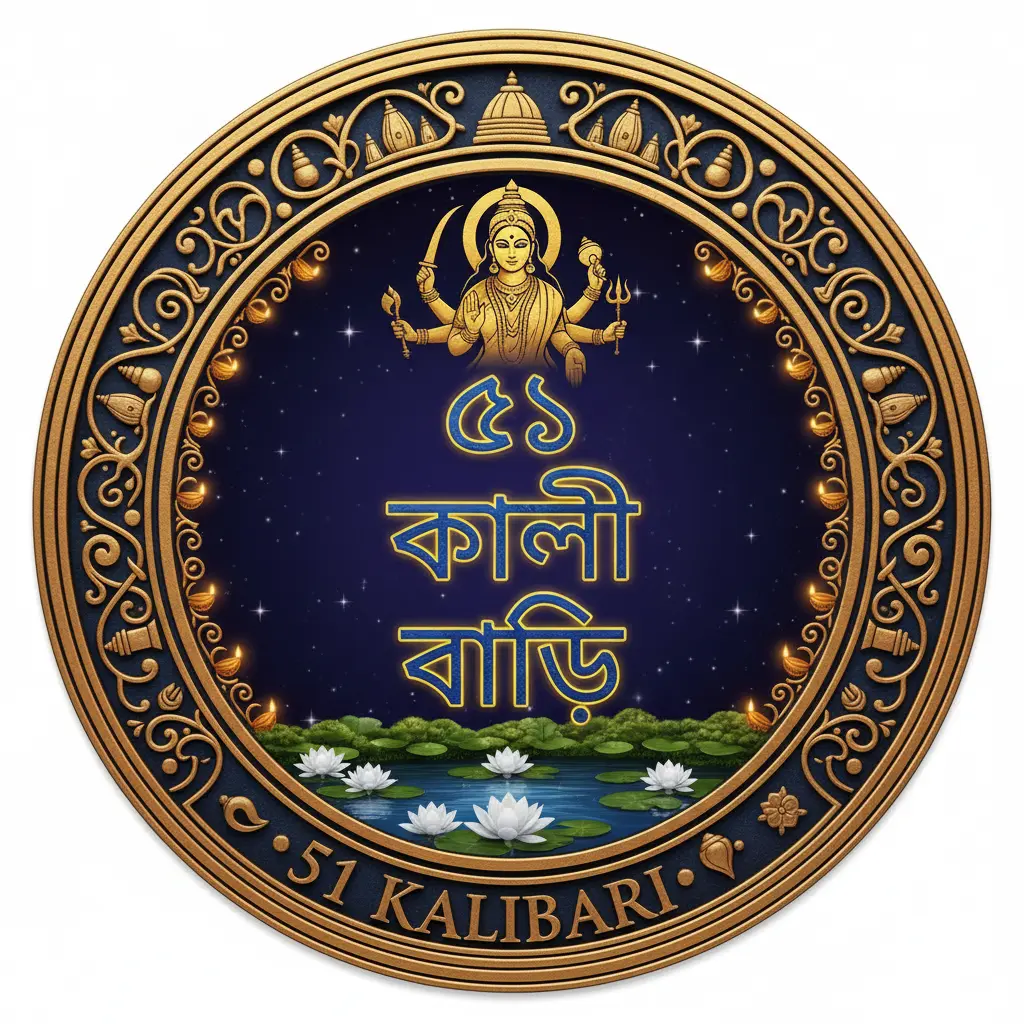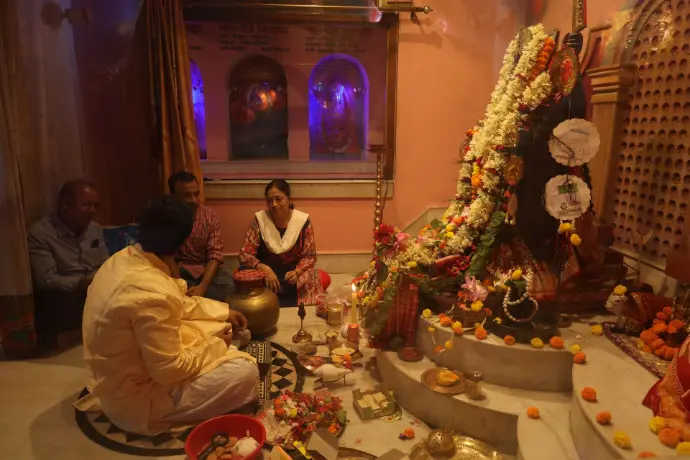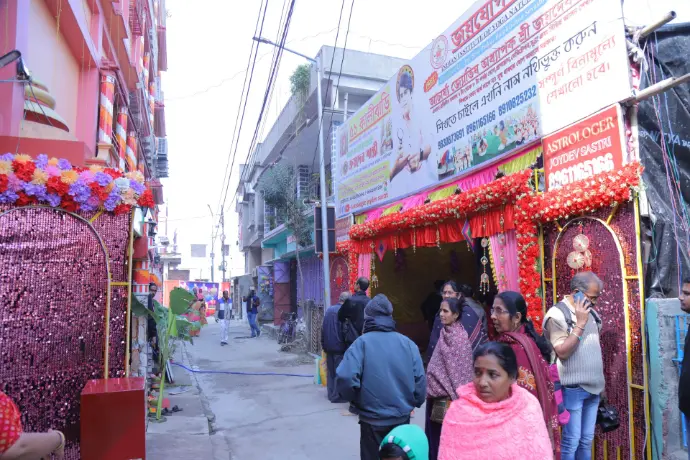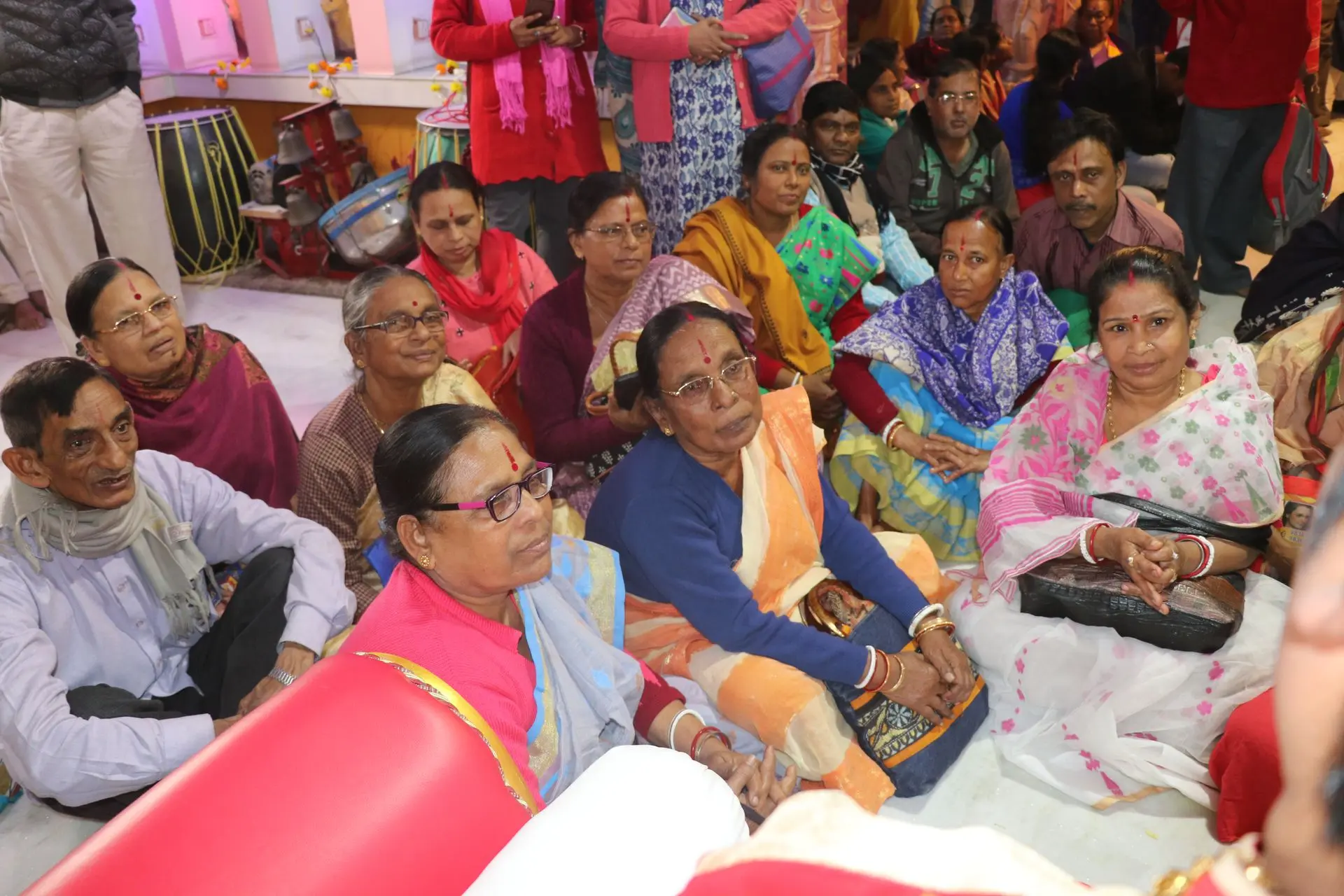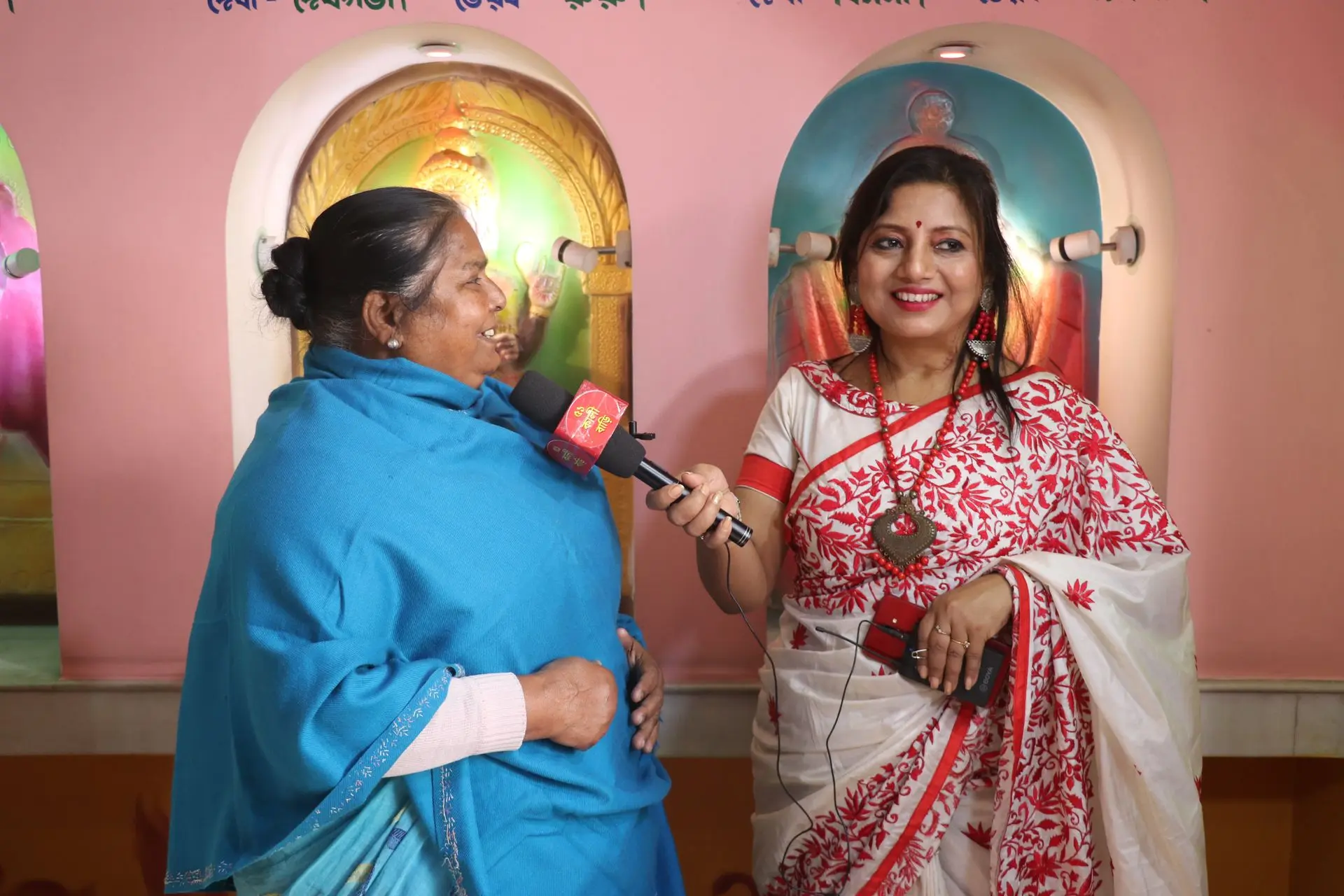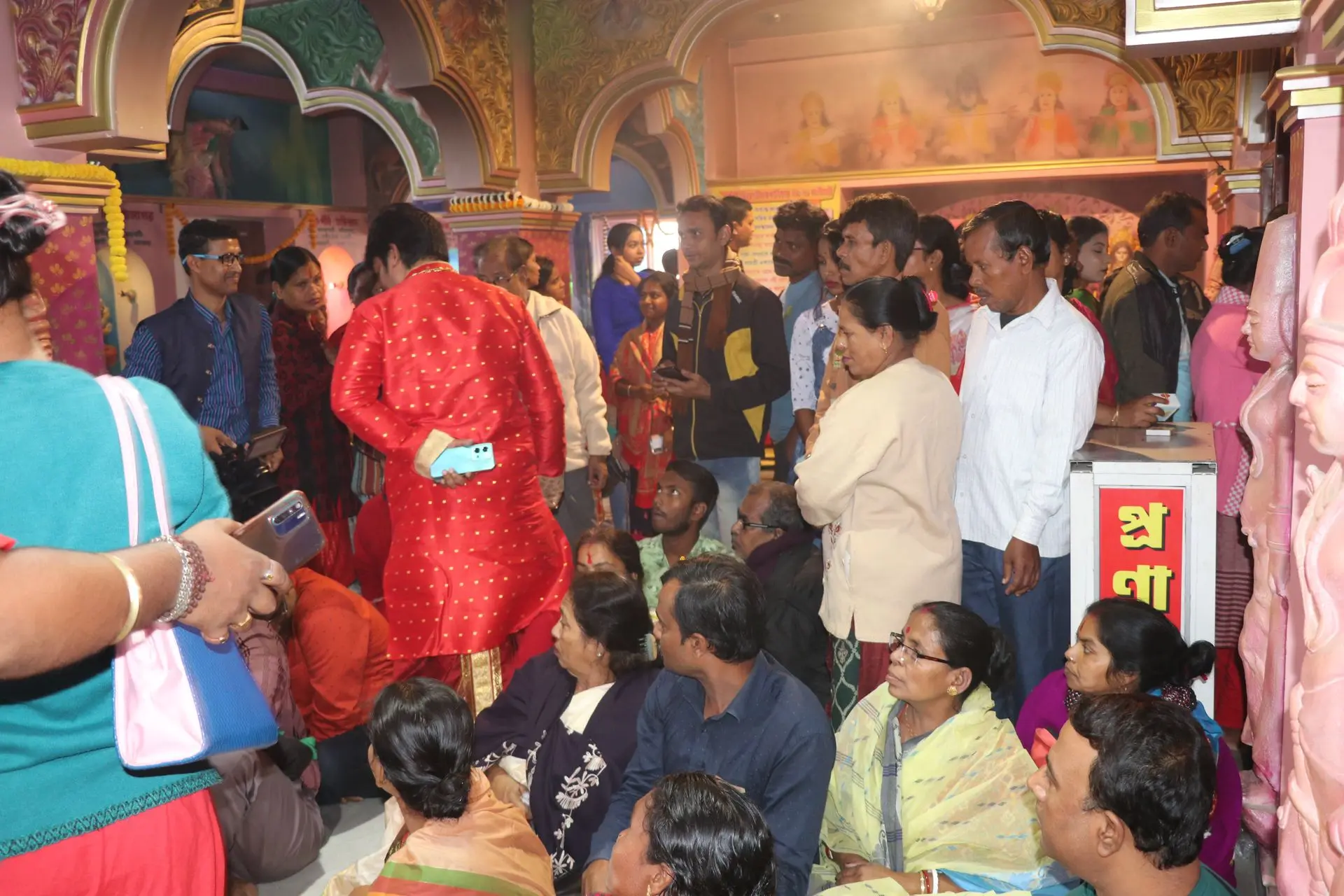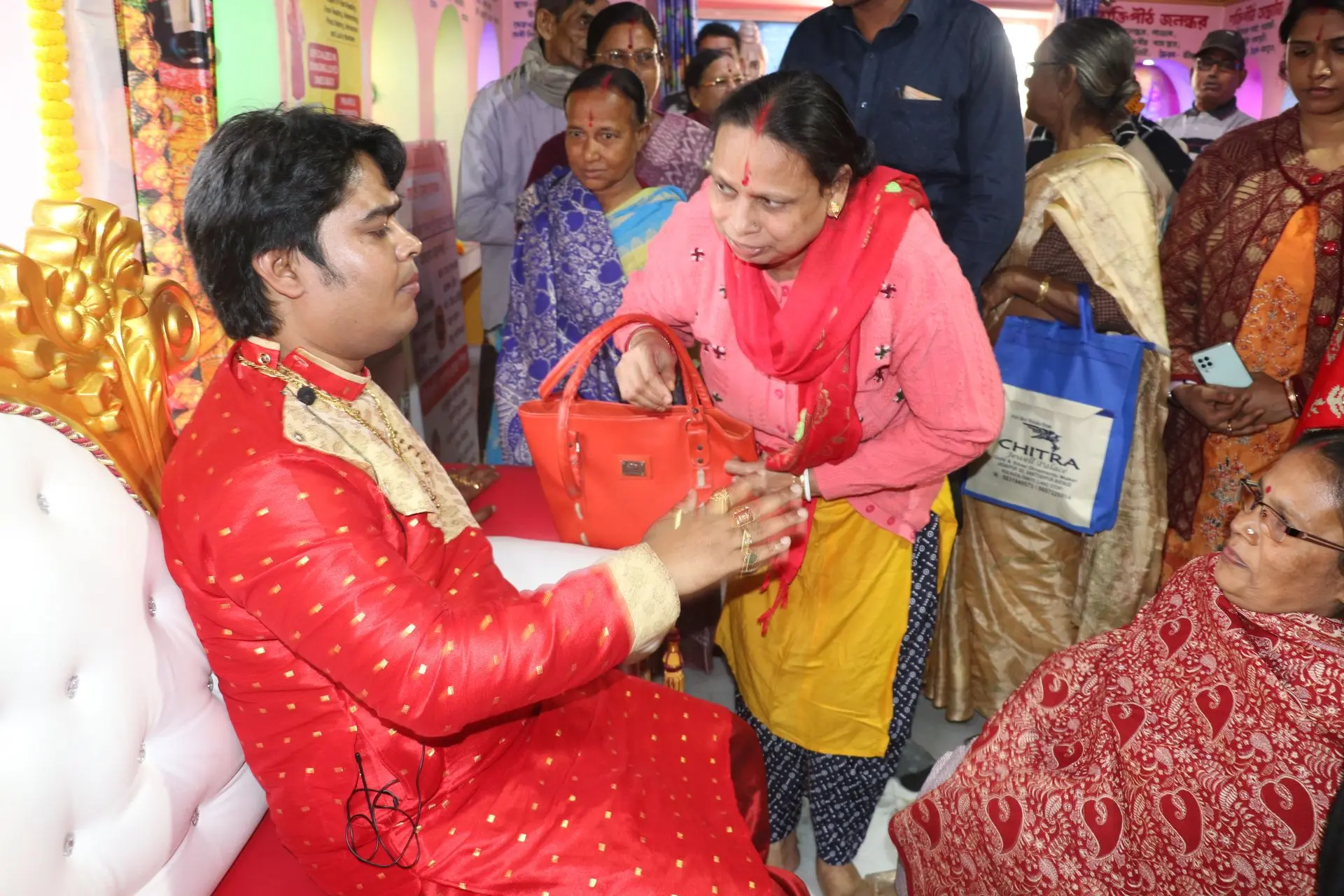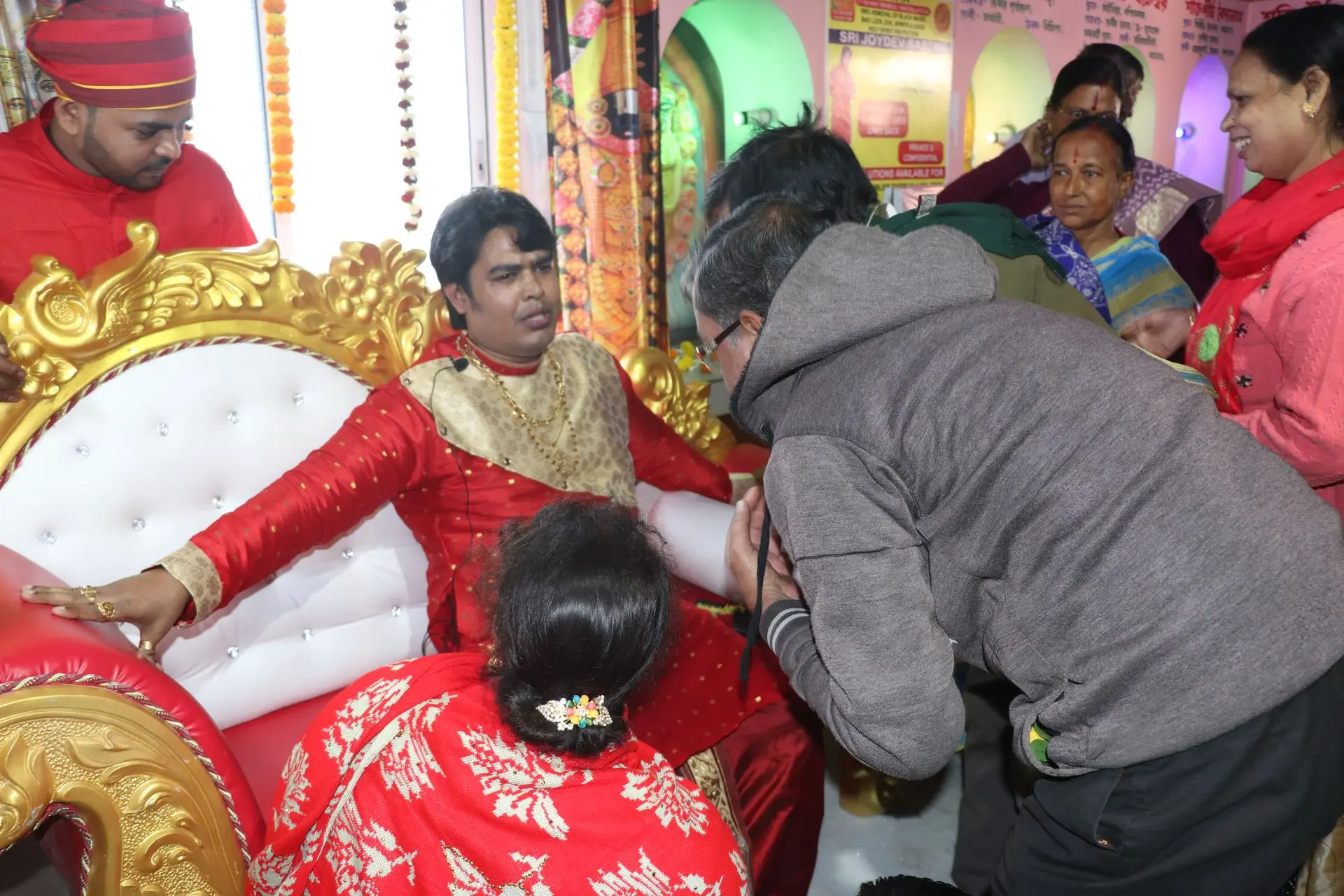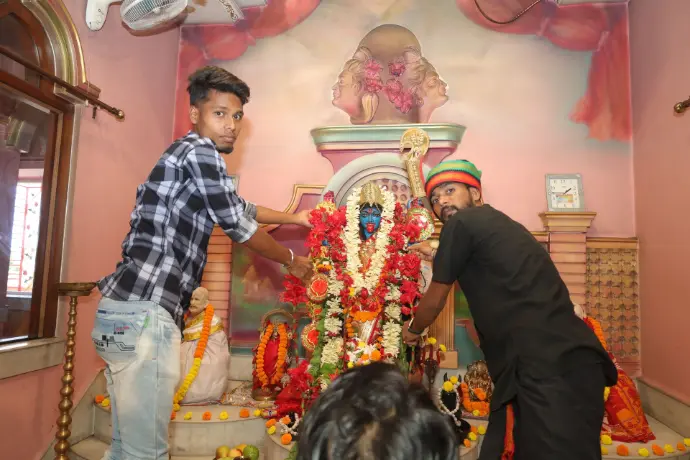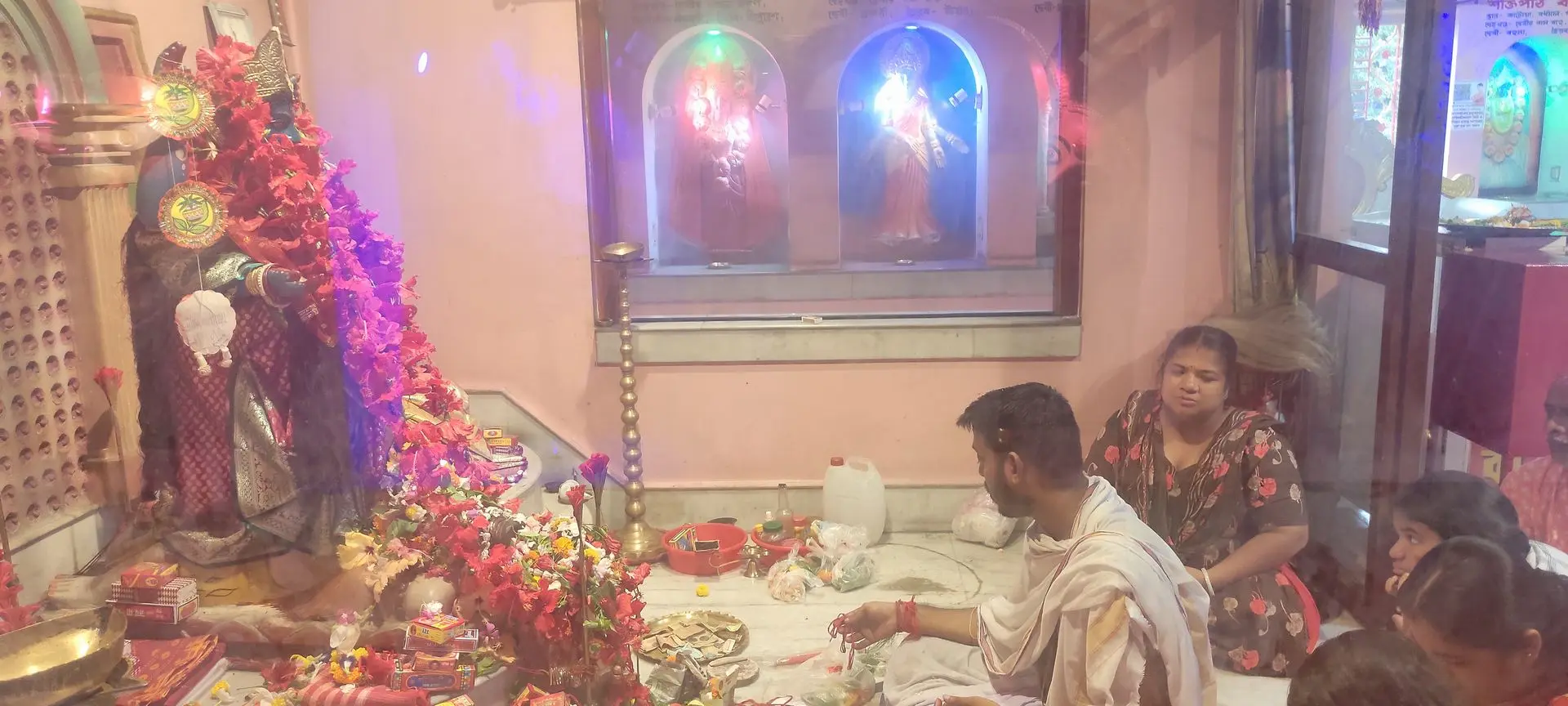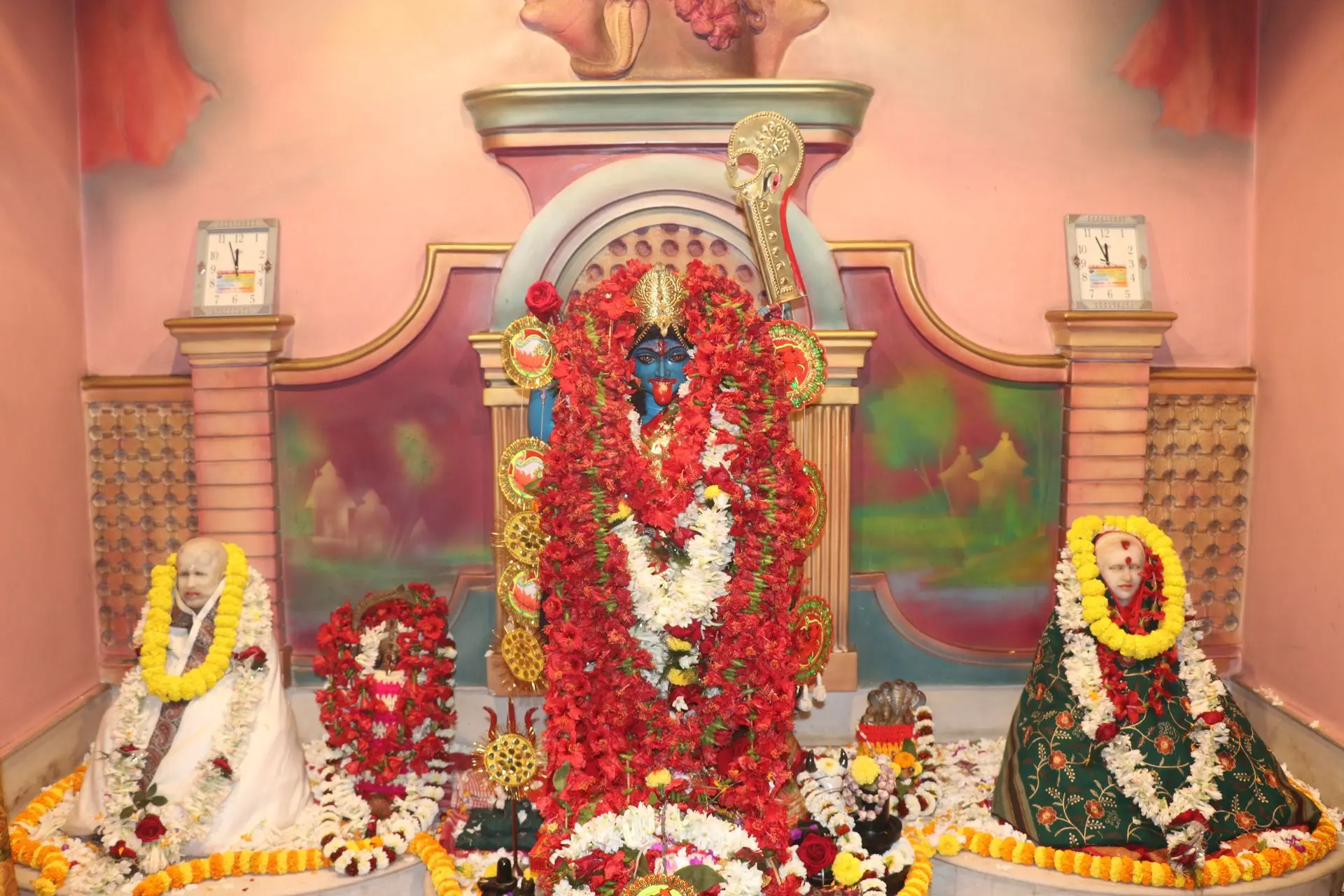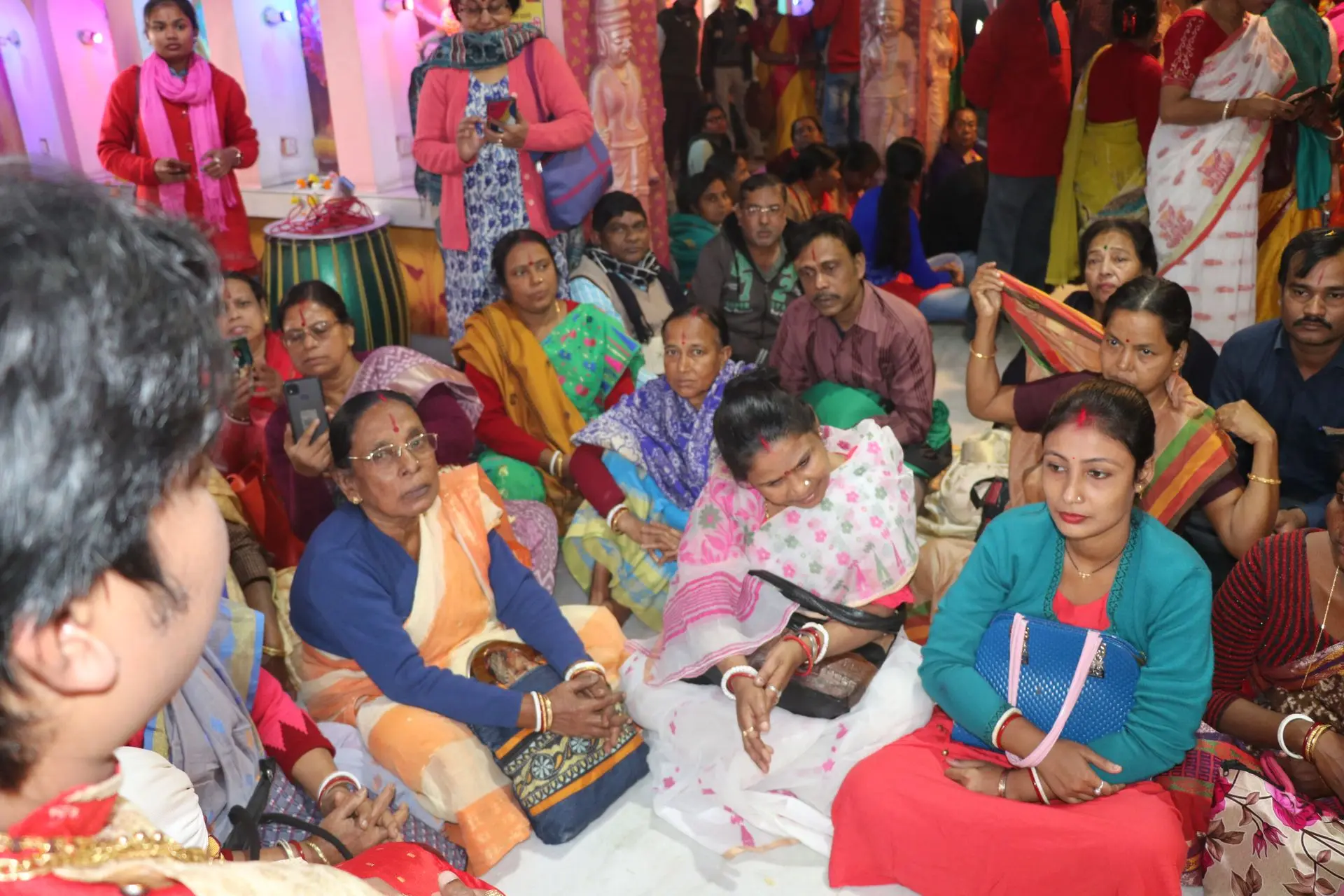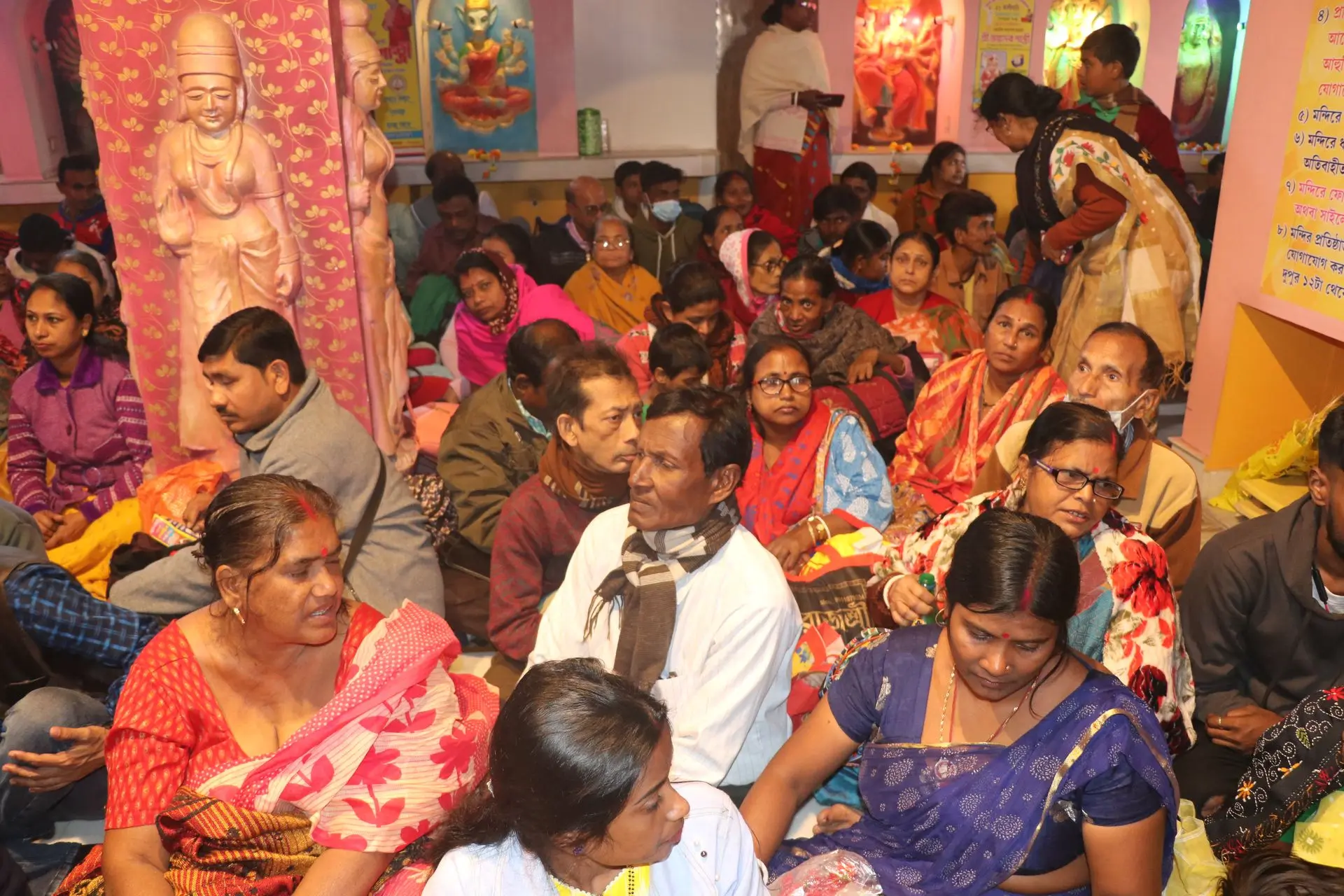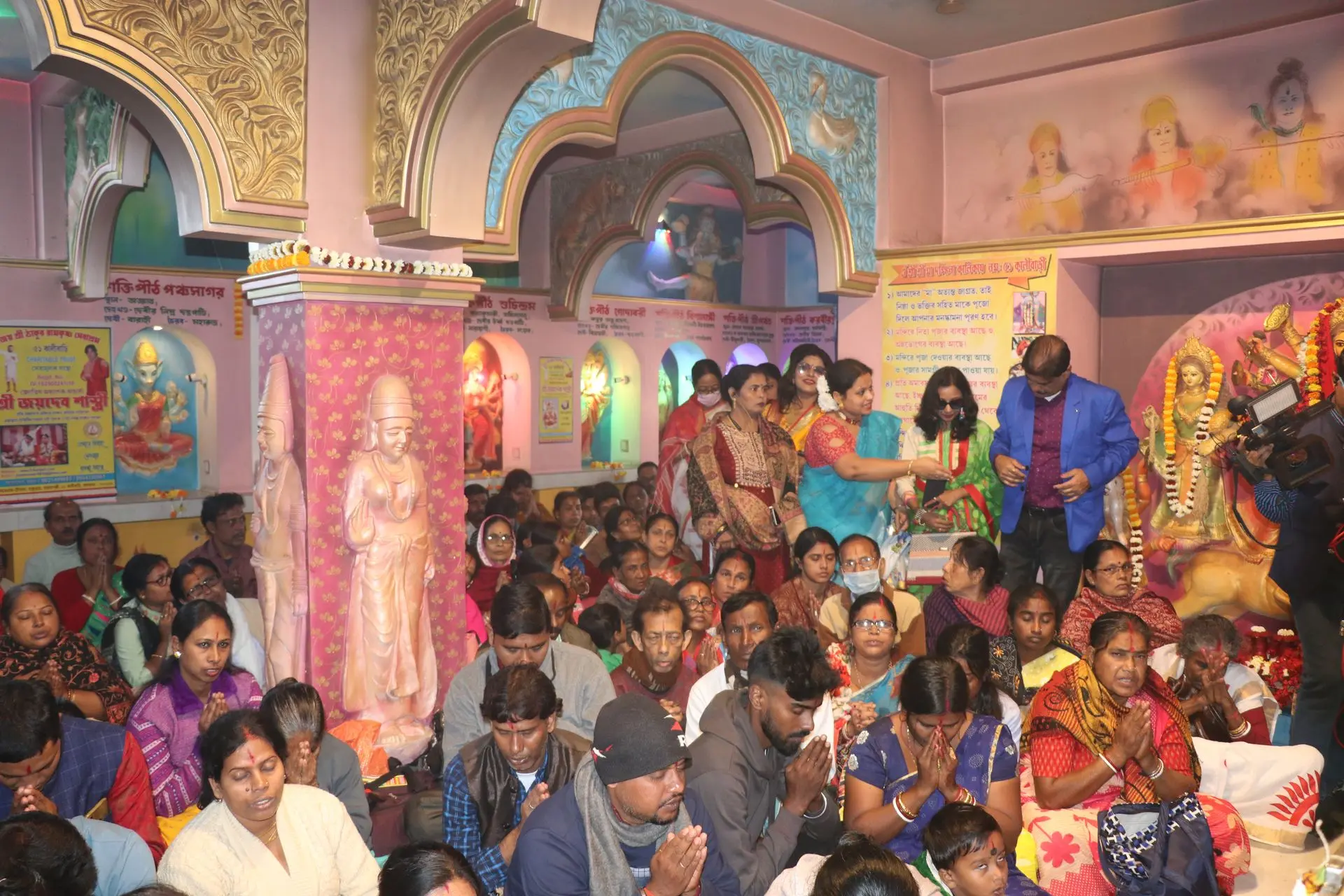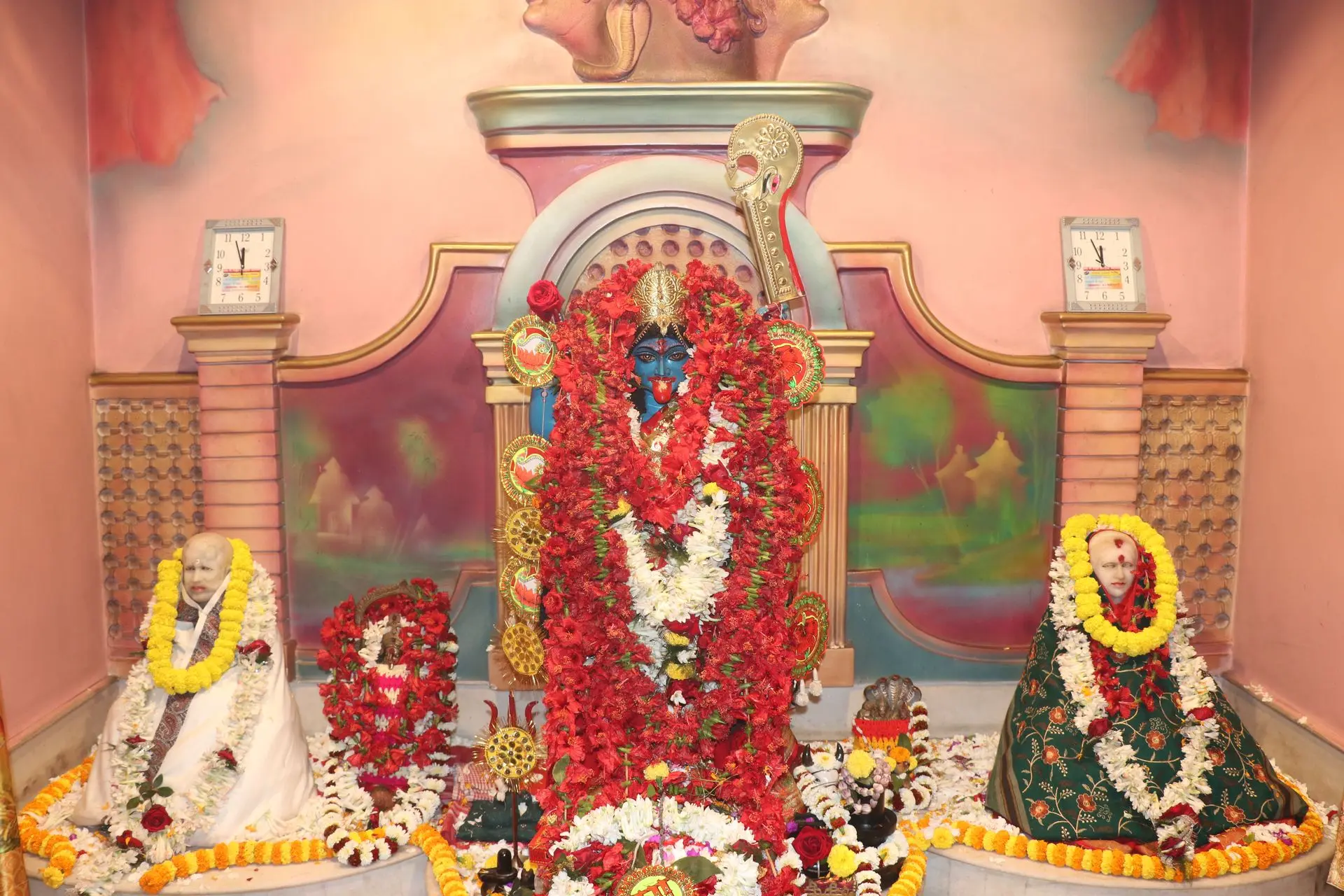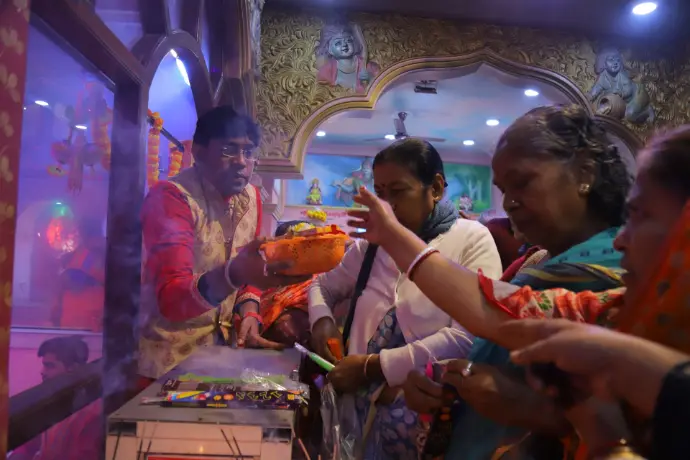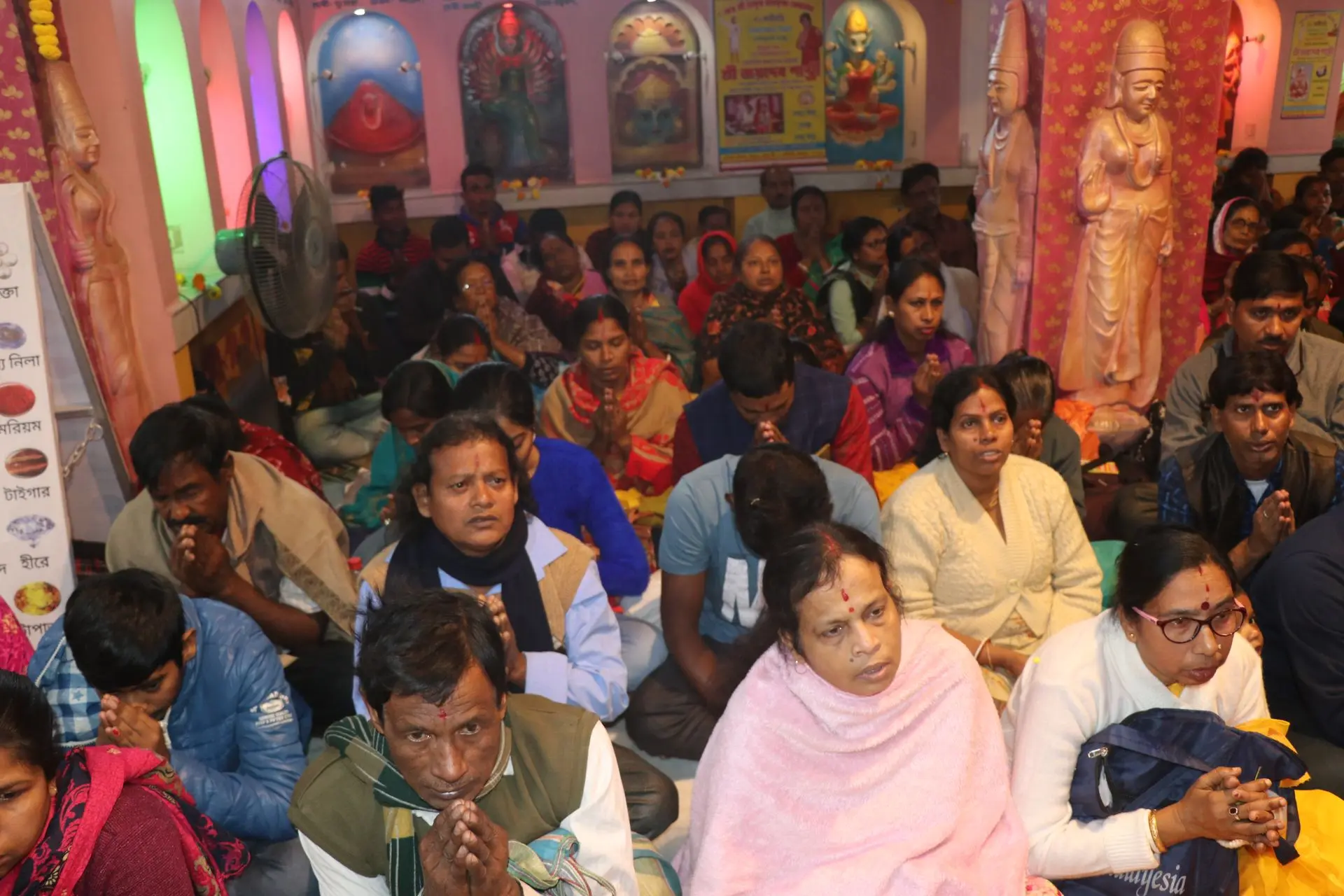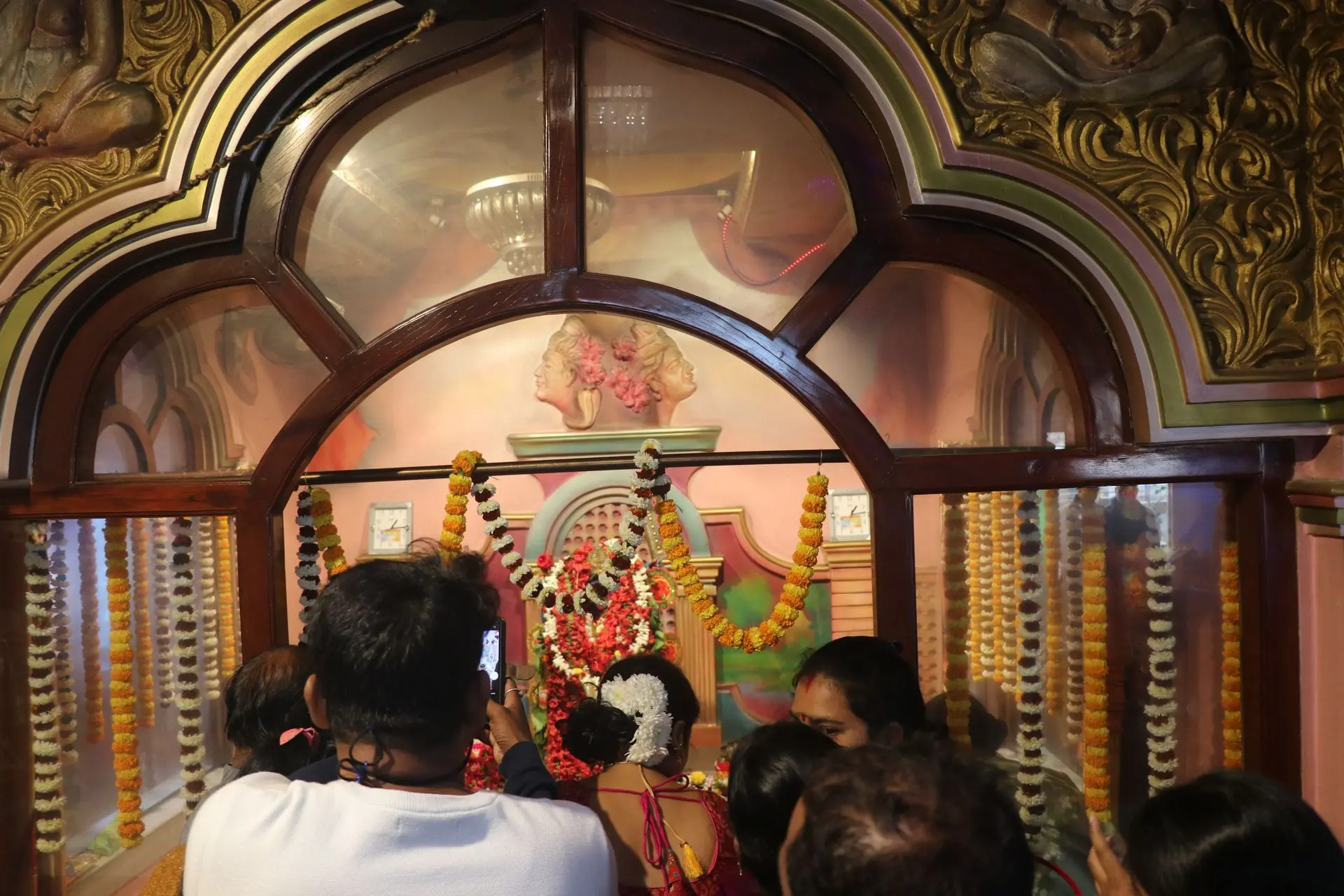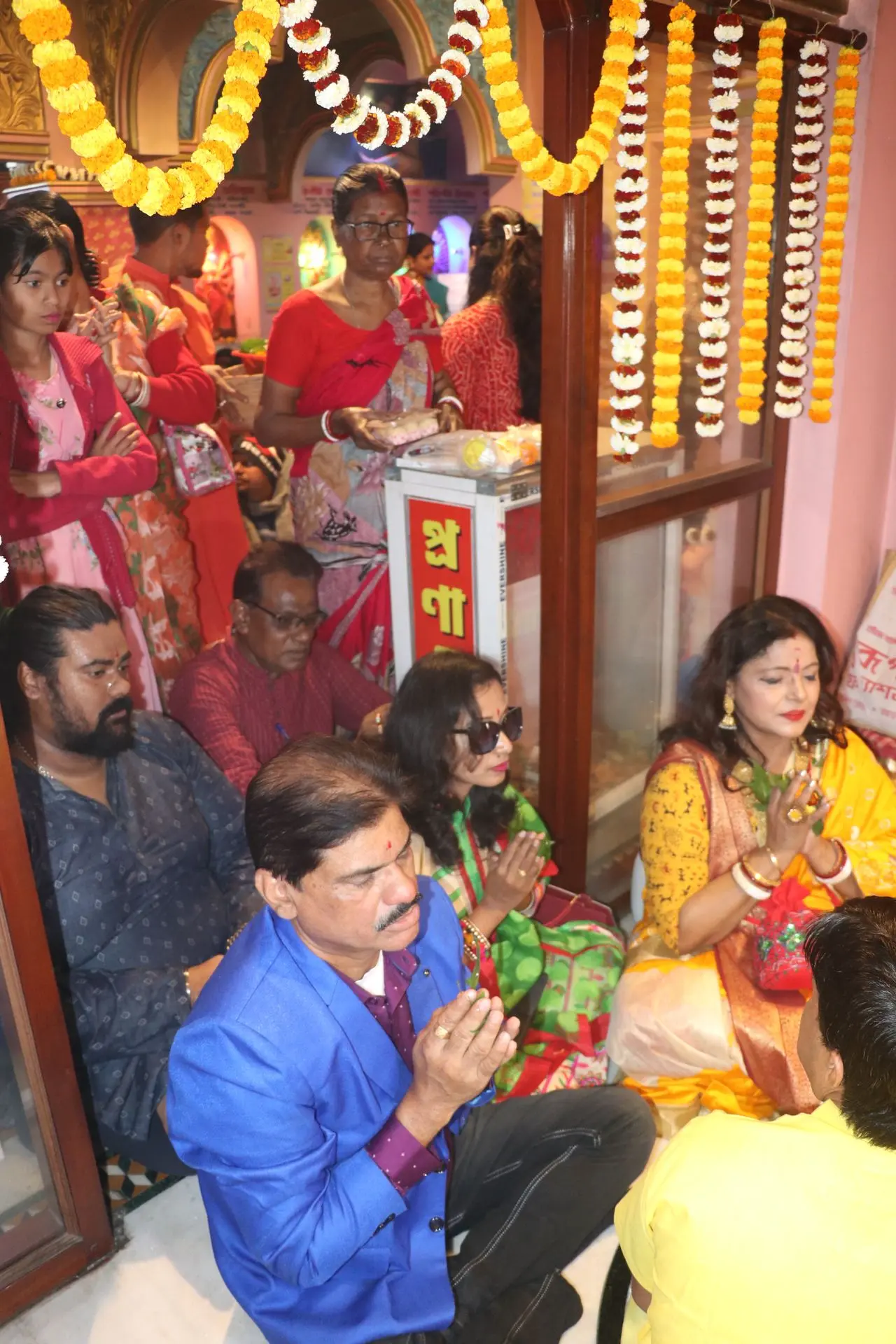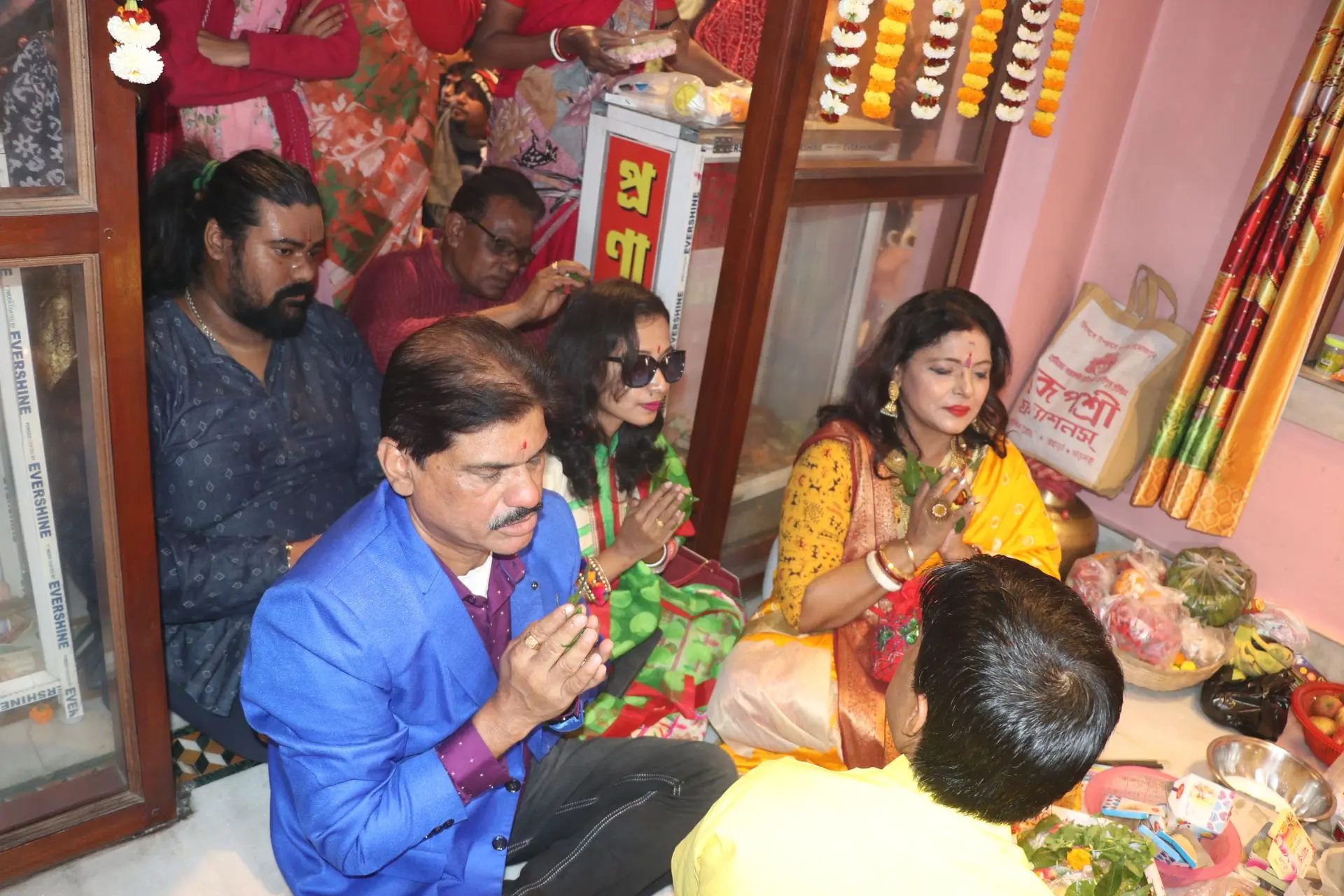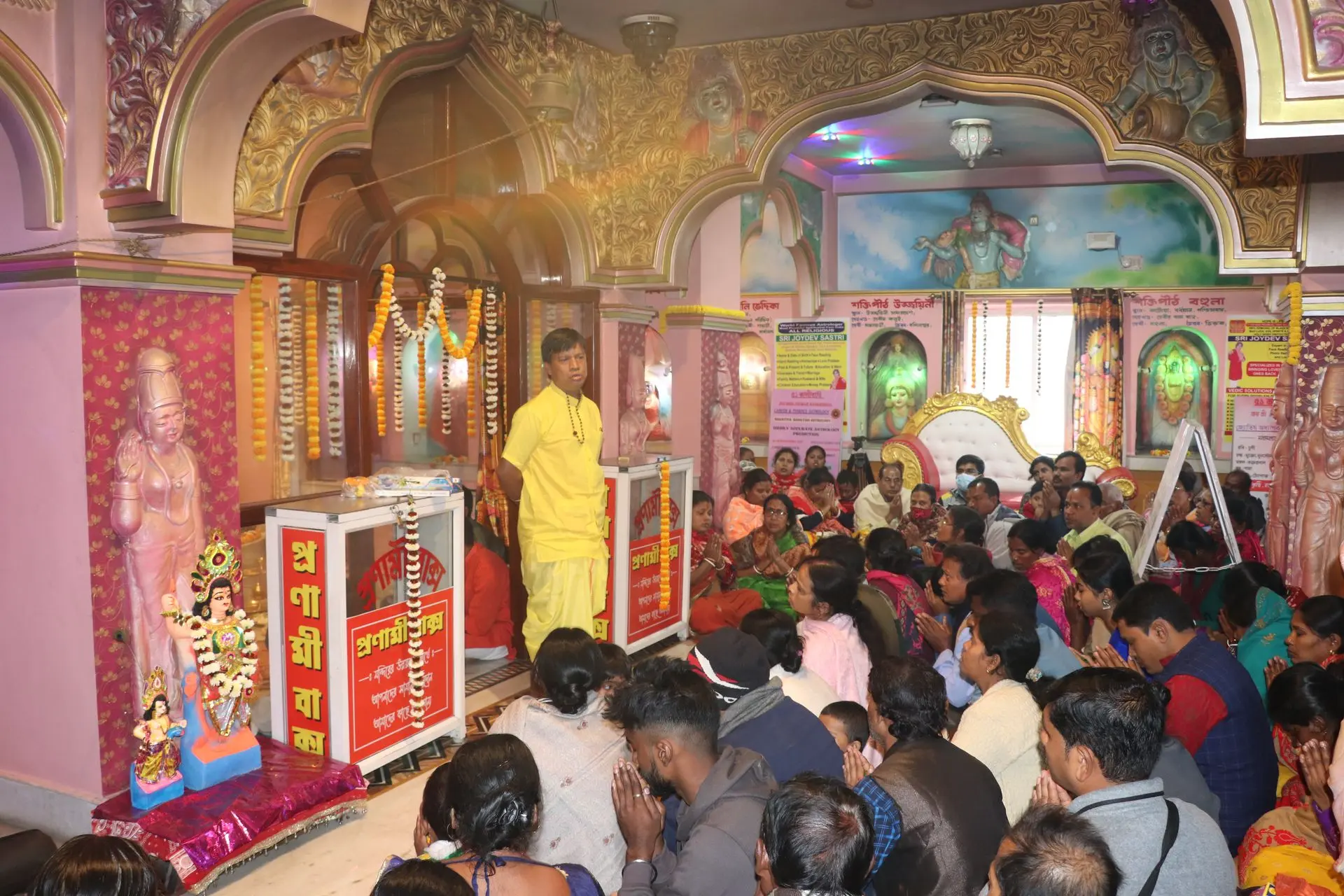৫১ কালীবাড়ি
সারদাপল্লি, মধ্যমগ্রাম
ফোনঃ 9903609484
Today we will learn about the origin mystery of "51 Kalibari" located in the Madhyamgram Sarada Palli area.
The story of "51 Kali Bari Found in a Dream" by Jyotishacharya Jayadev Shastri in the Saradapalli area of Madhyamgram is a spiritually and historically significant tale, which is particularly revered and associated with the local people. This narrative not only reflects Shastri's personal spiritual journey but also highlights his profound devotion to Goddess Kali and his influence on the local community. The entire story is an astonishing continuity of spiritual feelings and events.
Beginning of the story
Astrologer Jayadev Shastri was known as a famous astrologer and spiritual guru. From a young age, he was influenced by spiritual powers. His family also believed in spirituality, but within Shastri, a special devotion and attraction towards Goddess Kali developed. The environment of Madhyamgram at that time was very conducive to spiritual practice, and various religious traditions were prevalent there.
One night, Shastri had a profound dream in which Goddess Kali herself appeared to him. The form of Goddess Kali was extremely majestic and fearsome. In the dream, the Goddess instructed him that he could receive blessings by establishing 51 Kali temples. The Goddess said that by establishing these 51 temples, the area would transform into a special power center, and people would be freed from all kinds of suffering and danger.
Shastri Ji's Resolution
The dream was so real and vivid that after waking up, Shastriji felt that it was not an ordinary dream—it was a divine instruction. He thought it was a special task in his life that he had to fulfill. He shared this dream with his family and close devotees, creating immense enthusiasm among them. Many expressed interest in joining this plan, and everyone believed that it was a rare opportunity to receive the goddess's blessings.
51 Kalibari's Plan
Shastriji then decided that he would construct 51 Kali temples as per the goddess's instructions. However, this was no ordinary task. It required sufficient space, resources, and time. But Shastriji's faith was so strong that he believed he would receive the goddess's grace and the support of the local people for the construction of each temple. And indeed, that is what happened—the people of the area began to assist Shastriji with their money and labor.
Spiritual and social influence
Since the establishment of the 51 Kali idols began, a special kind of spiritual excitement and change has been observed in the area. The devotion and respect of the people towards Shastri Ji continue to grow, as they believe that through Shastri Ji, Goddess Kali herself has established this sacred place. The influence of the Kali temples is far-reaching, not only in the spiritual realm but also in the social sphere.
People in the area begin to settle around the temples, and within a short time, the temples become the focal point of local culture and religious life. The people here believed that anyone who circumambulates these 51 Kali temples would receive the blessings of the Goddess in their life and be freed from all kinds of suffering.
- Blessing of the Goddess
The story becomes even more astonishing when some miraculous events begin to occur in Shastri's life. The presence and blessings of Goddess Kali are also clearly seen in the lives of many people. It is said that some individuals suffering from deadly diseases like cancer have recovered after performing worship here. Many have been freed from financial crises, while others have been rescued from dire dangers. These events further strengthen people's faith in Shastri's work.
- Inheritance
Shastriji's initiative has become religiously significant not only in Madhyamgram but throughout the entire region. Even after his death, to ensure that these 51 Kali temples remain a sacred pilgrimage site for people, Shastriji is teaching his devoted disciples to maintain and worship at those temples.
The story of these 51 Kali temples in Madhyamgram is still honored today as a symbol of faith in Goddess Kali and spiritual power, and the devotees who come here pray daily to receive the blessings of the Goddess.
- Conclusion
Jayadev Shastri's "51 Kalibari Found in a Dream" story is both a reflection of spirituality and an example of human determination and devotion to the deity. This story has remained an important part of local and regional religious culture, which has now become a sacred and miraculous place for the devotees of Goddess Kali.
#51kalibari, #Historyof51kalibari, #Madhyamgram, #saradapali, #astrology, #AstrologerJoydevsastri, #bestastrologer.

51 Kali Bari's 51 Goddesses
51 Kalibari is dedicated to a distinct form of Goddess Kali. Each of the 51 forms of the goddess is worshipped in the 51 Kalibari temples. These include—
🔴Hingula (Hinglaj) — Sati's Brahmarandhra, Karachi, Pakistan.
🔴 Karbir/Sarkarare - Devi's Trinetra, Karachi, Pakistan.
🔴 Sugandha - Devi's Nasika, Barisal, Bangladesh.
🔴 Amarnath - Sati's Voice, Srinagar.
🔴Jwalamukhi - Sati's tongue, Pathankot.
🔴 Jalandhar - Sati's left Breast, Jalandhar, Punjab.
🔴 Baijnath - Sati's Heart, Deoghar, Jharkhand.
🔴 Manas - Sati's right hand, Manas Sarovar.
🔴 Nepal - Sati's Janudway, Gujyeshwari Temple, Nepal.
🔴 Utkal Birajakshetra - Sati's Navel, in the temple courtyard of Puri.
🔴 Gandaki - Sati's Ghandadesh, Muktinath Temple, Nepal.
🔴 Bahula - Sati's left arm, Ketugram, Bardhaman.
🔴 Ujani - Devi's Right Elbow, Guskhara, Bardhaman.
🔴 Chattal/Chattogram - Sati's Right Arm, Chattogram, Bangladesh.
🔴 Tripura - Right leg of Sati, Tripureshwari Temple, Tripura.
🔴 Trisrota - Sati's left foot, Jalpaiguri.
🔴 Kamrup Kamakhya - Sati's Yoni, Guwahati.
🔴 Yugadya - Sati's right toe, Kshirgram, Bardhaman.
🔴 Kalighat - Sati's Right Toe, Kalighat, Kolkata.
🔴 Prayag - The finger of the goddess, Allahabad.
🔴 Jayanti/Jayantate - Sati's left ankle, Shreehotto, Bangladesh.
🔴 Kirit/Kiritkona - The crown of Sati, Murshidabad.
🔴 Varanasi - Goddess's Ear, Varanasi.
🔴 Kanyashram - Devi's backside, Tamil Nadu.
🔴 Kurukshetra - Devi's Gulf, Haryana.
🔴 Monibed/Monibedic - The deity's Monibandh, Rajasthan.
🔴 Shri Shail - Devi's Karnakundal, Shrihotra, Bangladesh.
🔴 Kanchidesh - Devi's Skeleton, Kankalitola, Bolpur.
🔴 Kalabhairav - Devi's left hip, Madhya Pradesh.
🔴 Shon - the right hip of the goddess, Madhya Pradesh.
🔴 Ramgiri - Right breast of the goddess, Uttar Pradesh.
🔴 Vrindavan - Goddess's Hair Net, Bhooteshwar Temple.
🔴 Shuchi or Anala - the upper tooth plate of the goddess, Kanyakumari, Trivandrum.
🔴 Panchsayar - The goddess's Adhodantapankti, exact location unknown.
🔴 Kartoyataat - Sati's Taalp, Bogdura, Bangladesh.
🔴 Shri Parvat - Sati's Right Taal, Guntur, Andhra Pradesh.
🔴 Vibhāṣa - Devi's Left Gulf, Tamluk, Medinipur.
🔴 Prabhas - Devi's womb, Kathiavara.
🔴 Bhairav Mountain - Goddess's Upper Lip, Ujjain, Madhya Pradesh.
🔴 Public place/water body - Sati's chin, Nashik, Maharashtra.
🔴 Godavari Coast - Sati's Left Bank, Rajahmundry, Andhra Pradesh.
🔴 Ratnabali - Goddess's Right Shoulder, Khanakul, Hooghly.
🔴 Mithila - The left shoulder of the goddess, exact location unknown.
🔴 Nolhati - Devi's Nala, Nolhati, Birbhum.
🔴 Karnat - The two ears of the goddess, exact location unknown.
🔴 Bakreshwar - Devi's Mind / Bhrumadhyastha, Dubrajpur, Birbhum.
🔴 Jashore - Devi's Water Lotus, Khulna, Bangladesh.
🔴 Atrohas - Devi's Lips, Lavpur, Birbhum.
🔴 Nandpur - Devi's Necklace, Sainthia, Birbhum.
🔴 Lanka - Devi's anklet, Sri Lanka.
🔴 Virat - Devi's North Padanguli, Jaipur.
Each temple was associated with different worship methods and religious ceremonies.
আমাদের মন্দিরে প্রাচীন বৈদিক নিয়মে শুদ্ধাচারে ও পূর্ণ ভক্তিভাবে নিম্নলিখিত অনুষ্ঠানগুলো সম্পাদিত হয়ঃ
সব অনুষ্ঠান সম্পূর্ণ বৈদিক নিয়মে, অভিজ্ঞ পুরোহিতের পরিচালনায় অনুষ্ঠিত হয়।✨ আমরা প্রদান করি সমস্ত পূজা সামগ্রী, আসন ও পূর্ণাঙ্গ আচারব্যবস্থা।
📞 এখনই যোগাযোগ করুন এবং আপনার শুভ আয়োজনকে করুন দেবতার আশীর্বাদে সফল।
বিবাহ অনুষ্ঠান
বিবাহ শুধুমাত্র দুটি মানুষের নয়, বরং দুটি পরিবারের পবিত্র বন্ধন। শাস্ত্রনির্দেশিত মন্ত্রোচ্চারণ, দেব-দেবীর আশীর্বাদ এবং অগ্নিকে সাক্ষী রেখে এখানে বিবাহ সম্পন্ন হয়। এই আচার অনুষ্ঠান কেবলমাত্র সামাজিক নয়, বরং আধ্যাত্মিক ও দেবীয় আশীর্বাদে ভরপুর। আমাদের মন্দিরে বিবাহ সম্পাদিত হয় প্রাচীন বৈদিক নিয়ম মেনে, যাতে বর-কনের জীবনে আসে সৌভাগ্য, সমৃদ্ধি এবং আজীবনের মিলন। মনোমুগ্ধকর পরিবেশ, পূর্ণাঙ্গ আচারব্যবস্থা এবং দেবতাদের কৃপায় এই বিবাহ অনুষ্ঠানকে করে তোলে এক স্মরণীয় অভিজ্ঞতা।

মুখে প্রসাদ
মুখে প্রশাস্ত বা বিদ্যারম্ভ হলো শিক্ষাজীবনের প্রথম ধাপ, যেখানে শিশু প্রথমবার দেবী সরস্বতীর আশীর্বাদে অক্ষরজ্ঞান গ্রহণ করে। এই পবিত্র মুহূর্তে অভিজ্ঞ আচার্য মন্ত্রোচ্চারণের মাধ্যমে সন্তানের হাতে অক্ষর লিখিয়ে দেন। এটি কেবলমাত্র একটি আচার নয়, বরং শিশুর জ্ঞানার্জনের দ্বার উন্মোচন। আমাদের মন্দিরে এই অনুষ্ঠান অনুষ্ঠিত হয় সঠিক বৈদিক নিয়মে, যাতে সন্তান তার জীবনের প্রতিটি ক্ষেত্রে সফলতা লাভ করে এবং বিদ্যায় সমৃদ্ধ হয়।

উপনয়ন
উপনয়ন বা পৈতৃক অনুষ্ঠান হলো সন্তানের জীবনে এক মহাপবিত্র অধ্যায়ের সূচনা। এই আচারেই প্রথমবার শিশুকে বৈদিক ব্রত গ্রহণ করানো হয় এবং গুরু মুখে মন্ত্র শোনার মাধ্যমে সে প্রবেশ করে বিদ্যা ও জ্ঞানের পথে। শাস্ত্র অনুযায়ী এই দিন থেকেই সে ধর্মীয় কর্মে অংশগ্রহণের যোগ্যতা অর্জন করে। আমাদের মন্দিরে অভিজ্ঞ আচার্য ও পুরোহিতগণ সঠিক বৈদিক নিয়ম অনুসারে এই অনুষ্ঠান পরিচালনা করেন। সন্তানের ভবিষ্যৎ উজ্জ্বল ও জ্ঞানপূর্ণ করার জন্য এটি এক অনন্য আয়োজন।

